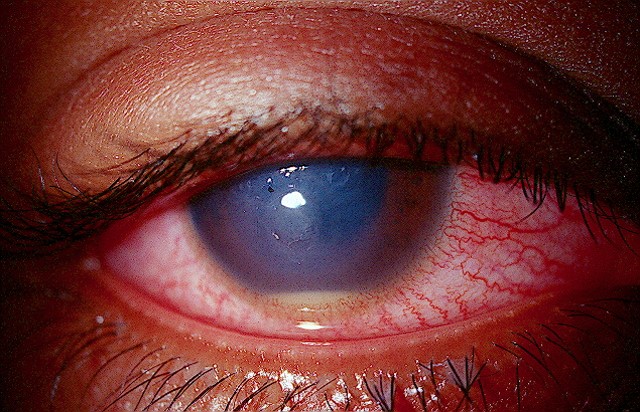 |
Researchers found a decreased risk of endophthalmitis in cataract surgeries performed by surgeons who graduated within the last 10 years compared with those who graduated more than 30 years ago. Photo: Joseph Sowka, OD. Click image to enlarge. |
Patient-related endophthalmitis risk factors have been widely documented, but studies indicate surgeon-level factors also influence postoperative outcomes. A recent retrospective analysis of Medicare claims (2011 to 2019) reported a surgeon-level endophthalmitis rate of 2.1 per 1,000 cataract surgeries with low surgical volume as the greatest risk factor.
The researchers reported that more than 14.3 million cataract surgeries were performed by 12,710 ophthalmologists during the study period. A total of 19,412 patients developed endophthalmitis within 90 days of surgery. Endophthalmitis rates stratified by total cataract surgery volume were as follows:
Surgical Volume (cases) | Endophthalmitis Rate Per Surgeon |
≤211 | 2.52 |
212 to 656 | 1.79 |
657 to 1,487 | 1.55 |
≥1,487 | 1.19 |
Analysis showed an inverse association between total cataract surgery volume and risk of endophthalmitis. The researchers reported that cases performed by surgeons in surgical volume quartiles one to three had a 59%, 31% and 18% increased risk of endophthalmitis compared with surgeons in the fourth quartile.
Interestingly, the researchers found a decreased risk of endophthalmitis in cataract surgeries performed by surgeons who graduated within the last 10 years compared with those who graduated more than 30 years ago. The researchers also found an association between low cataract surgical volume and greater years in practice with high endophthalmitis rates (in the top 20%).
The researchers wrote in their paper that their findings reinforce previous reports that lower procedural volume was independently associated with increased risk of postoperative endophthalmitis, though their findings deviate from studies that found fewer years of practice were associated with higher complication risk. They proposed that younger ophthalmologists “may be more willing to incorporate intracameral antibiotics in their practice which have been shown to be a safe and effective method to prevent post-cataract endophthalmitis.”
Overall, they concluded that endophthalmitis rates vary significantly at the surgeon level. “Our study further reinforces procedural volume as an important indicator for postoperative complications,” they wrote in their paper. “Future studies, however, are needed to better understand how surgeon experience affects the risk of developing endophthalmitis.”
Zafar S, Dun C, Srikumaran D, et al. National physician-level endophthalmitis rates for cataract surgery among Medicare beneficiaries in the United States: 2011-2019. Ophthalmology. April 6, 2023. [Epub ahead of print]. |

